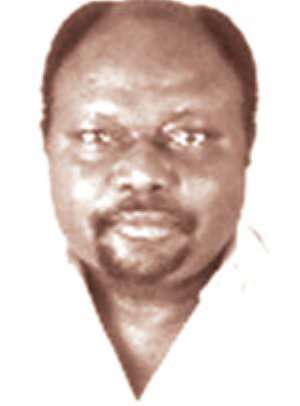
The Author, Dr. Kofi Dankyi Beeko, MD.
From early lessons and experimental drills, one could be thrilled, or be such fascinated in such laboratory exercises, that many a medical student might develop such interest, so as to swerve instead into the branch of pre-clinical medicine, called PHYSIOLOGY. It is not known exactly since when we have been able to register the Blood Pressure, (BP), in humans, but it has been known that the legendary Monarch, Catharine The Great of Russia, died in AD 1796, of cerebral hemorrhage, and the English Pathologist who performed the Autopsy on her could demonstrate, ' her Majesty' must have suffered from arterial 'hypertension', ( high blood-pressure), and indeed her death resulted from massive cerebral hemorrhage, AGED 69 YEARS. The designation of Blood Pressure on the continent, especially in Germany and Italy, is RR. We are indebted to an Italian Physician of the 19 th Century by name of RIVA ROCCI. Then, a Russian Physician called Nikolai Korottkoff is remembered as having discovered, and written about 'Korottkoff sounds'.. The registration and interpretations of the five heart sounds have bothered many medical students, and at times, thrown them out of medical schools eventually, for inability to recognize, and interpret them. We ought to be grateful to both Riva Rocci and Korottkoff for a machine with the impossible name to pronounce, 'The Sphygmomanometer'. Many have got away with just staying with 'Sphyg', and that hasn't prevented them from becoming prominent men and women of medicine subsequently. To get by in the past, you were encumbered with another fixture, which a couple of times, people claim to have encountered Physicians in public places carrying 'some apparatuses' demonstrably strapped around their necks. That is called 'the Stethoscope'. To establish the 'BP', you needed the Sphyg, and the Stethoscope. Just to mention in passing that, the Stethoscope is used in doing a couple of investigations other than just measure the BP. An example would be 'to listen to the heart', meaning, when there could be more, or abnormal sounds, 'murmurs' emanating from the heart, whose significance the doctor ought to find out, in order to be able to help, (heal) the patient. The stethoscope could pick a number of sonar events from the chest, and abdominal cavity, which frequently gets called 'stomach' by lay-persons. The blood pressure is measured in mmHg, (mm of Mercury). It is called the same, even if, as we will soon be familiarized with, when the apparatus is Digital, or aneroid. The blood pressure has been observed over the years to be normal, i.e. not bothering 'the bearer', when it is around (125/65mmHg). The figure above, is called 'the systolic', and the other below is designated, 'the diastolic'. Even if the definition may remain controversial, most places of authority would accept a Systolic of (135mmHg), going with a diastolic of (90mmHg) as normal. The situation with children is somewhat different, as would be expected, and wouldn't be gone into, in this exercise. A tremendous amount of exercise has been gone into by 'thinkers' and 'technicians' in medical industry to assist in monitoring, both in hospital and domestic environments. Just fantasize, in situations with American and Soviet Astronauts, and Cosmonauts, in outer space, in conditions of weightlessness. 'Digital Sphygs' have served them well, and there is no validity in claims that Mercury 'Sphygs' out-perform their digital counterparts. Arterial Hypertension has been the cause of hundreds of thousands of deaths and states of incapacitation in the West for almost a century, and the costs in Billions of US$, squeeze even the economy of the mighty. Not only that, but like 'a true epidemic', it has reached Africa and third world countries in no lesser proportions. Heart - attack and cerebral stroke are the commonest events that lead to death, or incapacitation. 'You do not feel you are hypertensive.' In other words, arterial hypertension may be symptomless. It makes sense therefore to accept the need to monitor your own BP, at best on daily basis. From what age and under which circumstances? Agreeably, arterial hypertension is not very common under the age of forty. Obesity and family history tend to break some rules. The heart specialist, and the Physician have traditionally dominated in the care of citizens in communities with hypertension, Neuro-physicians, and Neurosurgeons have non-the-less since recent times joined in sharing the cake, and for good reasons. Hypertensive encephalopathy, may be accompanied by hemorrhage into the brain substance, but also into such spaces as the subdural, intra-ventricular, as well as the sub-arachnoid space. Neuro-imaging facilities, CAT-scan, and MRI-imaging would make assessment, and decision making as to surgery, and life-saving measures not so difficult. But, the aim of 'catching-up' with arterial hypertension before such complications would be worth every effort. Most re-warding should agreeably be, obesity-related arterial hypertension, whereby the reward could be observed as weight loss brings down the elevated BP, without medication. Sphygmomanometers of different descriptions, would make it possible for many a patient, educated by their Physicians, to monitor the BP domestically, and communicate the findings to their physician. It would be mandatory for the possible causes of hypertension to be investigated by the physician, before any means of bringing it down may be initiated. Situations would be encountered, whereby many a patient might be advised, or would advise themselves to discontinue their selected medications, because the BP MAY HAVE RESPONDED TO TREATMENT. Control , rather than treatment may be the right expression. Arterial hypertension accompanying such condition as Pheochromocytoma may be curable, when the kidney-associated lesion may be successfully surgically excised. The modality to measure the blood pressure has been made very simple by a number of biomedical-technology companies. It is nevertheless essential that the interested individual be oriented by a qualified Physician, rather than do a purchase, like you would a portion of KFC. Proficiency in handling the modalities would come with time. This doesn't completely replace your regular visit to your Physician, which even in the absence of a known illness, should be at least twice per year.
Kofi Dankyi Beeko, MD.
Consultant Neurosurgeon: dankyikofiyahoo.com




 You're an illiterate, illogical; a sane person won't praise Bawumia's 'destructi...
You're an illiterate, illogical; a sane person won't praise Bawumia's 'destructi...
 NHIS was a brainchild of NDC, piloted during PNDC era; we've failed to market th...
NHIS was a brainchild of NDC, piloted during PNDC era; we've failed to market th...
 'Mahama has no respect for Ghanaians; I'm disappointed in him' — Development Eco...
'Mahama has no respect for Ghanaians; I'm disappointed in him' — Development Eco...
 King Oyanka petitions IGP: Greater Accra Regional Police accused of undermining ...
King Oyanka petitions IGP: Greater Accra Regional Police accused of undermining ...
 'It's backed by data' — Local gov't Minister clarifies his 'Ghana's poverty leve...
'It's backed by data' — Local gov't Minister clarifies his 'Ghana's poverty leve...
 TUC condemns manager for assaulting female employee at Nkawkaw over GHC90
TUC condemns manager for assaulting female employee at Nkawkaw over GHC90
 SSNIT Hotels Sale: We will continue to engage stakeholders — Director-General
SSNIT Hotels Sale: We will continue to engage stakeholders — Director-General
 Claims gov't secured debt restructuring agreement with IPPs misleading, deceptiv...
Claims gov't secured debt restructuring agreement with IPPs misleading, deceptiv...
 Koforidua SECTECH Staff dies in car crash at Somanya
Koforidua SECTECH Staff dies in car crash at Somanya
 NDC National Executive fume over suspension of ‘sexy’ Assin Central PC
NDC National Executive fume over suspension of ‘sexy’ Assin Central PC
